8 dining room color combinations to make your space more exciting
Discover the best color combinations for dining rooms with the latest inspiration and expert tips
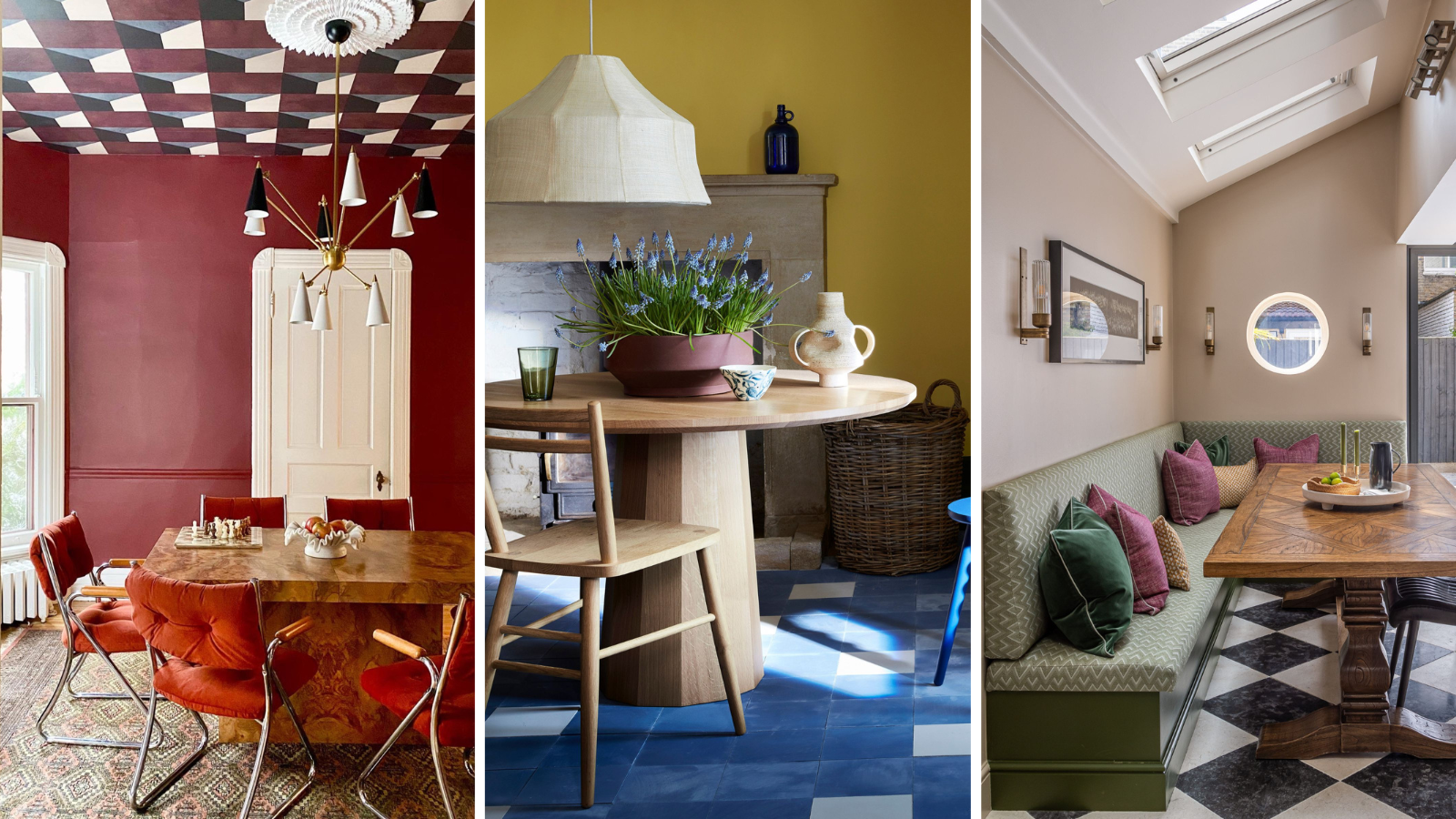
Dining rooms have undergone a transformation in the past decade or so. The nation's penchant for open-plan design has meant that many of us must choose dining room decor that blends seamlessly with the kitchen.
While we're big fans of open plan, our dining areas ought to claim their own space too. And this can be achieved through color. Whether you've got a separate dining room, or you're mapping out a dining area within an open plan kitchen, the color combinations you use in your space will completely transform how you use the room and how you feel in it.
Whether it's elegant dinner parties with friends that last well into the night, or weekend lunches with all the family gathered round, our dining room color combinations are the backdrop to some of life's most precious moments – so they are important to get right.
What color combinations work well in a dining room?
When considering which color combinations to choose for your dining room, you must first ask yourself, how will you most often use the space? And then, how do you want to feel when using it?
If your answer is that you want to host elaborate dinner parties, serve up cocktails, and be the social hub of your friendship circle where you feel elegant and luxurious, then dark and sultry shades will work best.
But, if you want a space where your kids can invite all their friends round and play games and enjoy lunch together, then a more vibrant and uplifting palette, such as orange or yellow, will help to achieve this feel.
Or, if relaxation at the end of a long working day is at the top of your dining room wish list, then paler, airy and nature-inspired pairings will do the trick.
We got the experts involved too, asking designers and color experts, what the best color combinations for dining rooms – this is what they said.
1. Crimson and white

The perfect backdrop for intimate dinner parties, crimson walls create an instantly rich, cozy and luxurious feel.
‘It’s common practice to use lighter colors for larger surfaces like walls, to keep the space open and airy. But recently we are seeing the opposite of that emerge, with walls showcasing dark, bold colors with a crisp white trim,’ says Philippa Radon, color expert at C2 Paints.
Here the white door and woodwork throughout the room work to balance out the light and create a clear and stark contrast. 'A dining room with a color palette of deep red and white is a great way to be bold and make a statement,' says Sandy Yen, founder and principal designer at Yen Collective. 'Layering in warm woods, leathers and velvets will beautifully round out this color scheme,' she adds.
Philippa also points out that it's important to distribute the shades carefully throughout your space. 'Consider your textiles, artwork, and furniture, as the colors used for each must combine to create a cohesive look.'
Here, the plush velvet chairs, textured table and metallic light fitting all bring warmth and a sense of luxury to the space, enhancing the grandeur and drama brought by the crimson walls.
2. Soft blue and black
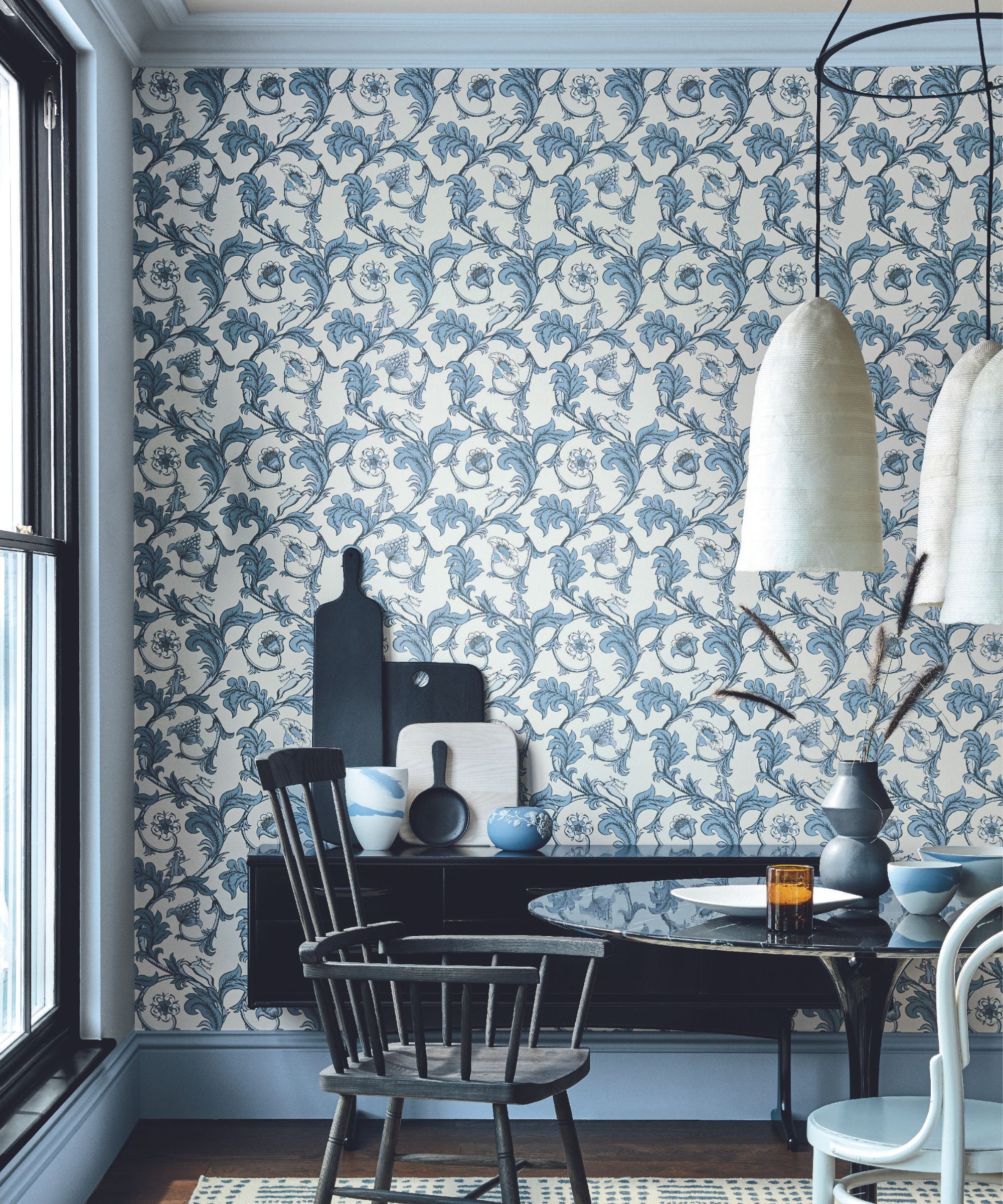
Pale blue is an inherently relaxing and airy shade – pairing it with black gives the hue a sophisticated and grown up edge.
'I always love to use a soft blue in a dining room, especially in a grasscloth wallpaper that adds a little bit of texture to the space. The calming hue sets the tone to sit down, have a good glass of wine and relax,’ says Annie Delaporte at Annie Delaporte Designs.
‘South or west-facing rooms, which receive more sunlight, can handle cooler colors like soft blues and greens, as these cool tones work to balance out the brightness of the light,’ adds Philippa.
3. Black and white

The classic combination is a fail safe choice for any room, but works especially well in a dining room. ‘One of my favorite combinations is a cool, deep and mysterious charcoal with a soft, warm but balanced white,’ says Sue Wadden, director of color marketing at Sherwin Williams.
‘I love using dark colors in dining rooms and pairing with a lighter white or creamy neutral to balance the look. Dark colors are ideal to lend a touch of elegance and drama in rooms used for entertaining guests,’ says Sue.
Here the glossy white marble fireplace and round table contrast against the matt black walls to create definition and form interest through texture.
4. Orange and blue

If your dining room is set to be a space for lively gatherings, games and sprawling weekend lunches with lots of family and friends packed around the table, create a space that fosters high energy and upbeat vibes.
‘For energizing a space, consider vibrant combinations like orange and teal or pink with gray. These colors stimulate and uplift, making them great for areas where you need a boost of energy,’ says Philippa.
Orange and blue sit opposite each other on the color wheel, making them the perfect, lively combination of warm and cool. Here the deep orange is lightened and brightened by the pale blue door and moulding.
5. White on white
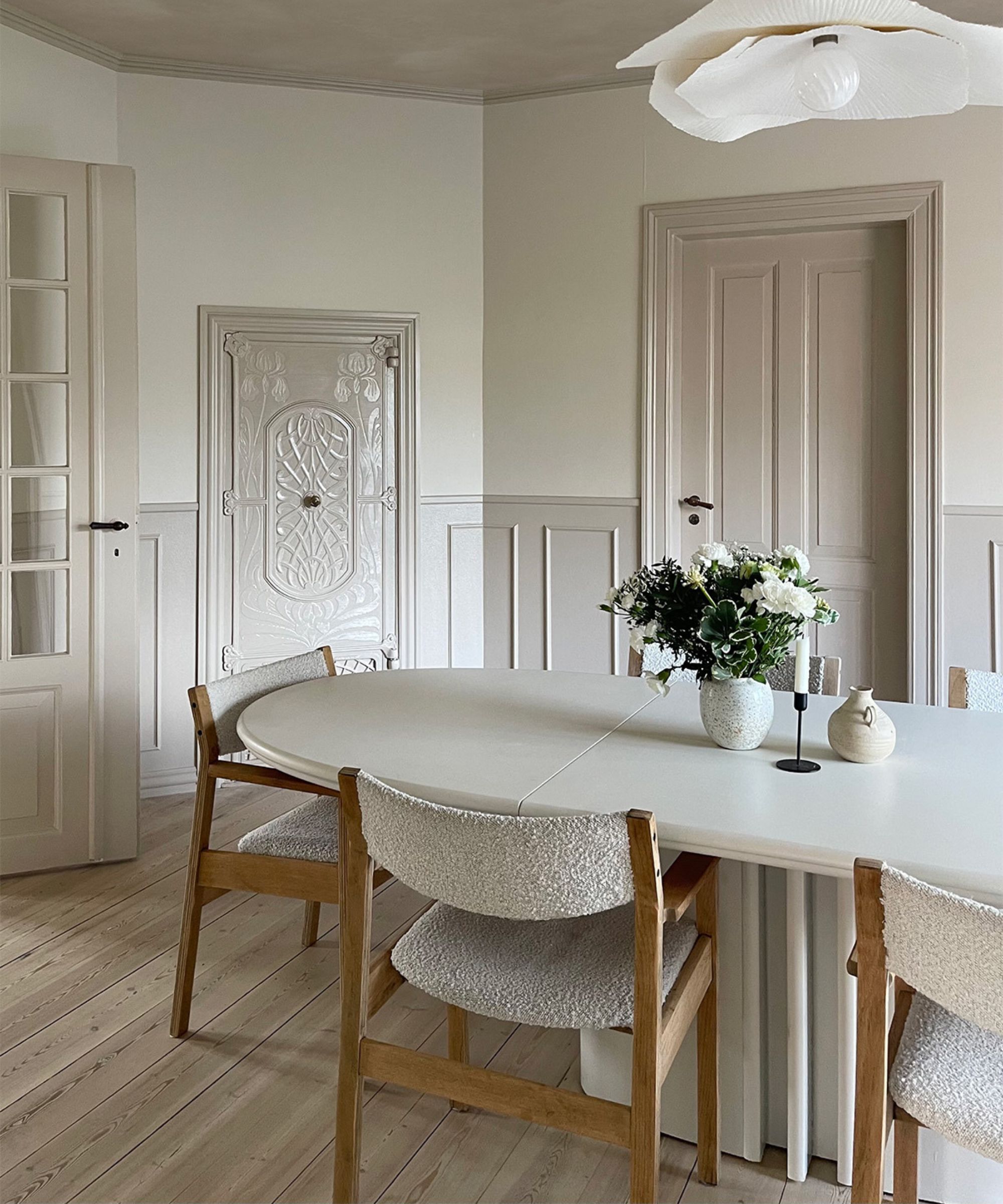
If you’ve ever tried out multiple testers of white paint, you’ll know that there are so many variations of the shade. Combining two or three different shades of white can create a look that’s chic and minimalist, without being boring.
'A white-on-white dining room gives an immediate sense of calm, and creates a relaxing atmosphere for dinners and gatherings,' says Sandy.
Varying shades of white is a tried and tested classic for dining rooms. The trick is to divide up your room into two or three sections and paint them in these variations. Here, the paneling, walls, and glazed door are all painted in slightly different shades, creating a feel of depth and interest, while remaining thoroughly light and airy.
'Just make sure to add that final layer and bring in different materials, textures and colors to warm up the white,' adds Sandy. The white boucle chairs and pale oak wood floors bring in texture to the space and prevent it from feeling clinical or cold.
6. Gray and lime
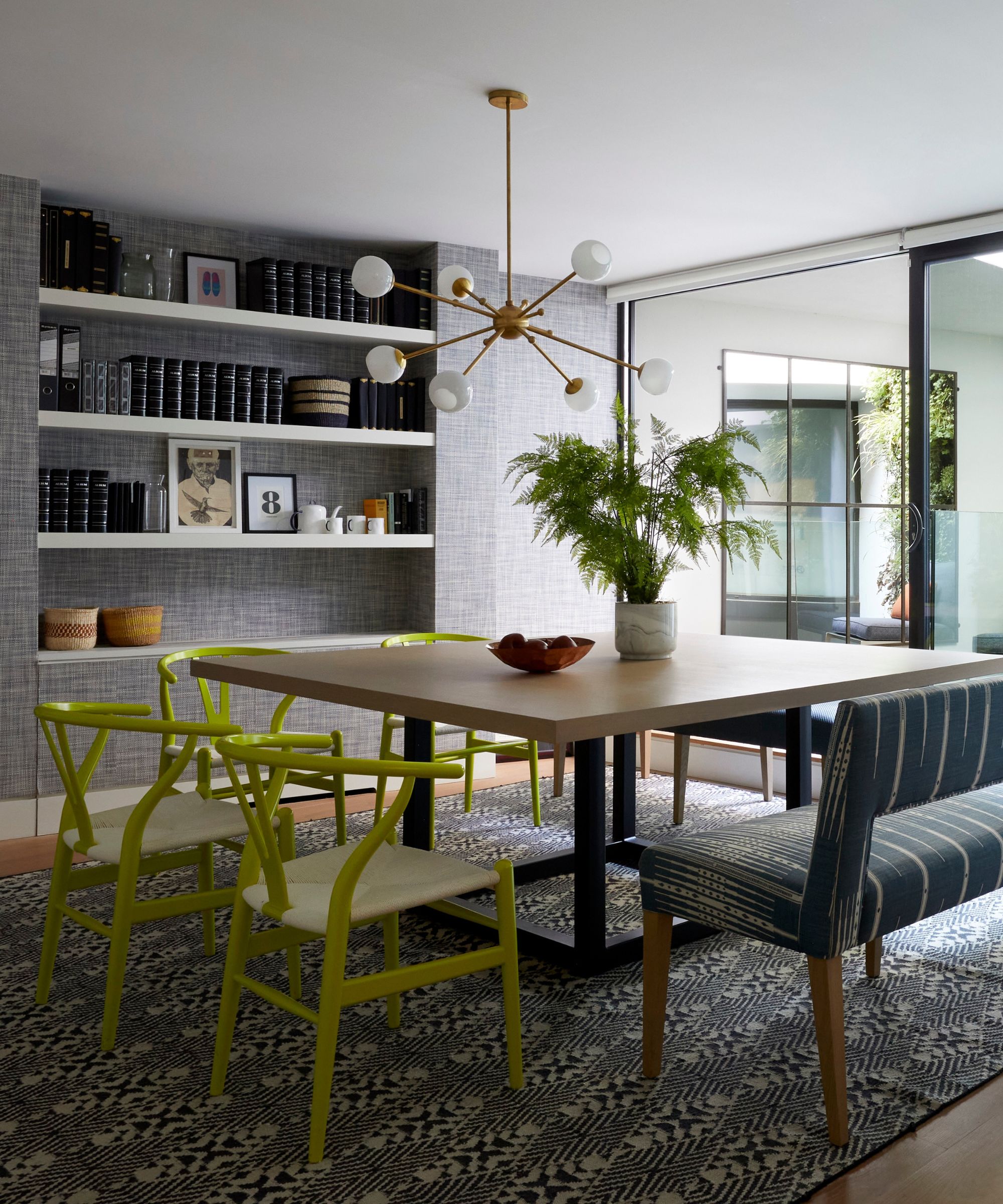
We’ve all heard of the unexpected red theory, but the same rule can be applied to other stand-out colors, such as lime green. In this heavily textured, modern, grey dining room, the lime green chairs add a zingy burst of warmth in the center of the space.
‘If you imagine a landscape, you can see that green harmonizes beautifully with other natural colors such as greys, blues, and browns,’ says Merli Wright, design director at Plain English. ‘Green is always a popular color for interiors as it is one of the main colors associated with the natural world and, as such, has a calming and positive effect on how we feel.'
7. Muted olive and rose
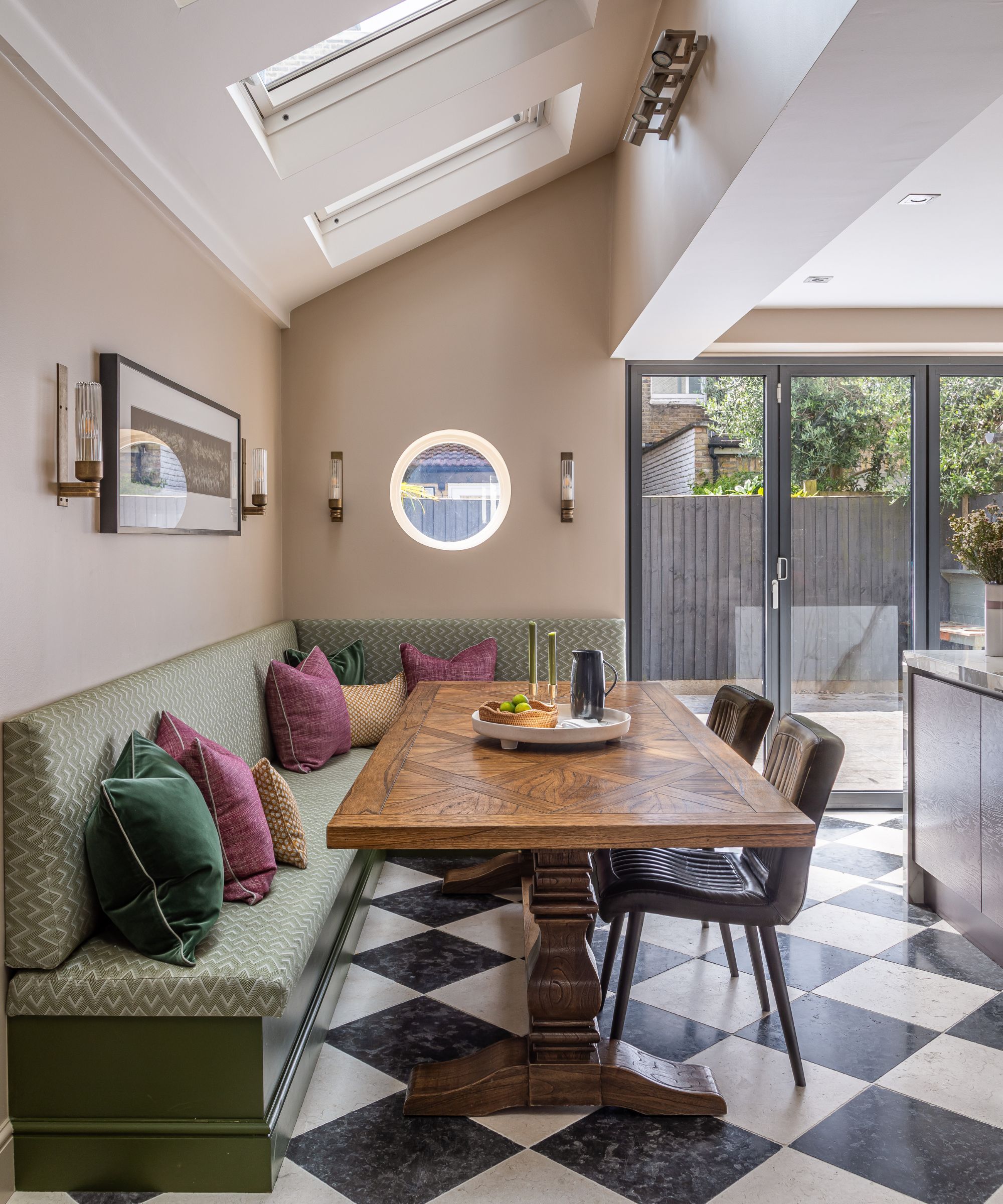
If you want to be creative with your colors but you still want a calm and pared-back feel, combining two muted hues is a great way to go.
‘The dark olive (Bancha, Farrow & Ball) on the banquette creates a feeling of calm when combined with the red-based neutral (Oxford Stone, Farrow & Ball) which is brimming with warmth. Both earthy colors soften the monochrome marble checkboard floor,’ says Ali Johnson, director at Otta Design.
The soft colors are as close to a neutral as you can get, but with a little more warmth and extra oomph. The black and white flooring creates definition and brings a sharper, more dynamic edge to the scheme. ‘The purple and ochre cushions add a burst of vibrancy,’ adds Ali.
8. Yellow and blue
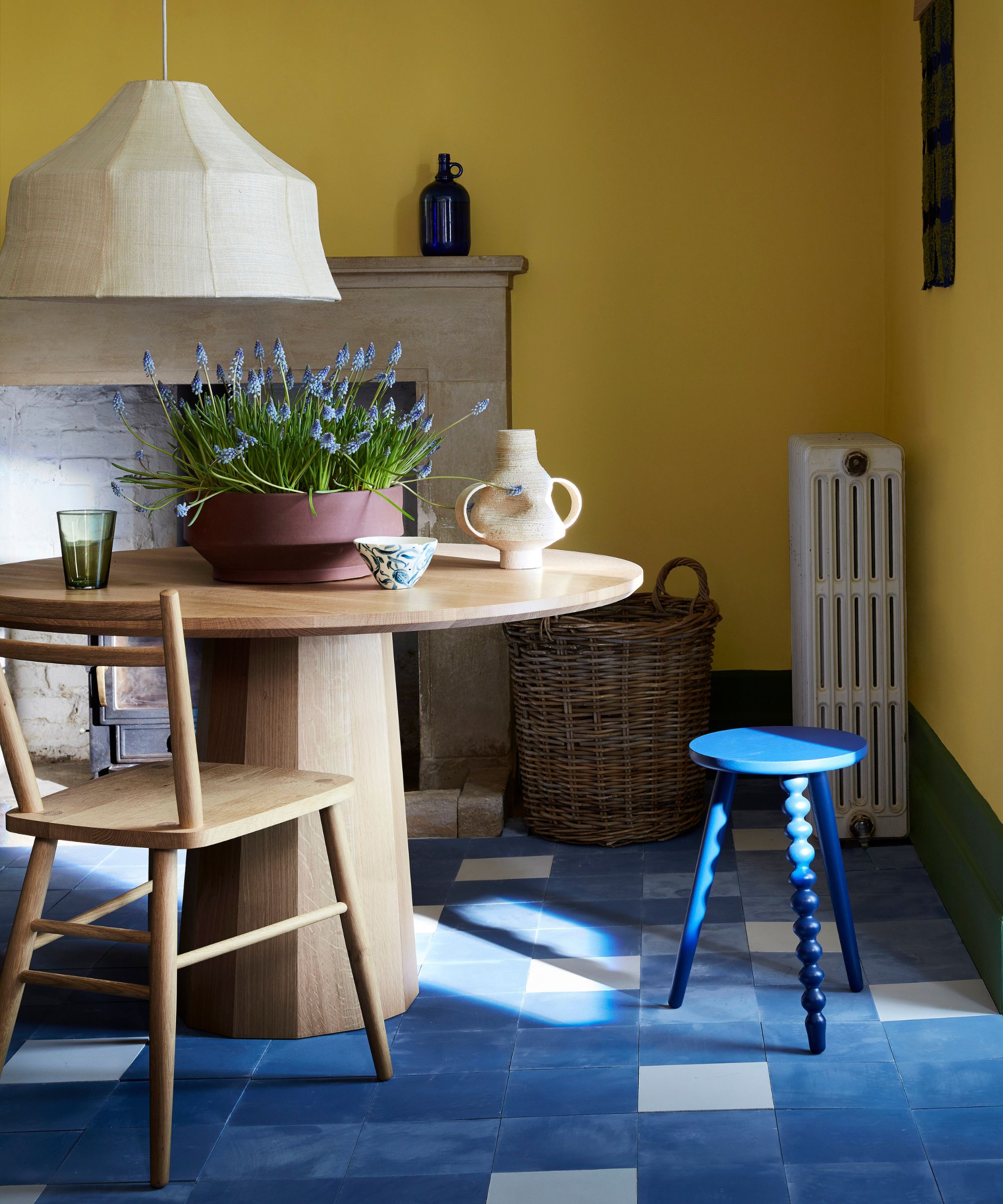
Combining colors that are in total contrast to each other is a sure way to make a statement in a dining room, and combining primary colors is a fun, failsafe way to do this.
'Primary colors can be used to inject color and add a youthful touch to an interior, especially when used in contrast with more pared-back tones,’ says Dominic Myland, CEO of Mylands. 'Pair vibrant primary colors with neutral hues for a bold yet sophisticated scheme,’ he adds.
Here, the simple wooden dining table and oversized white lampshade work to soften the overall look and bring a grown-up and sophisticated feel to this playful scheme.
Dining room color combinations are such an important part of the overall design of the room. These are often quite practical spaces, dominated by furniture which can leave little room for getting creative with decor, so getting creative with your pairings in the obvious way to elevate a dining room.
Sign up to the Homes & Gardens newsletter
Design expertise in your inbox – from inspiring decorating ideas and beautiful celebrity homes to practical gardening advice and shopping round-ups.
-
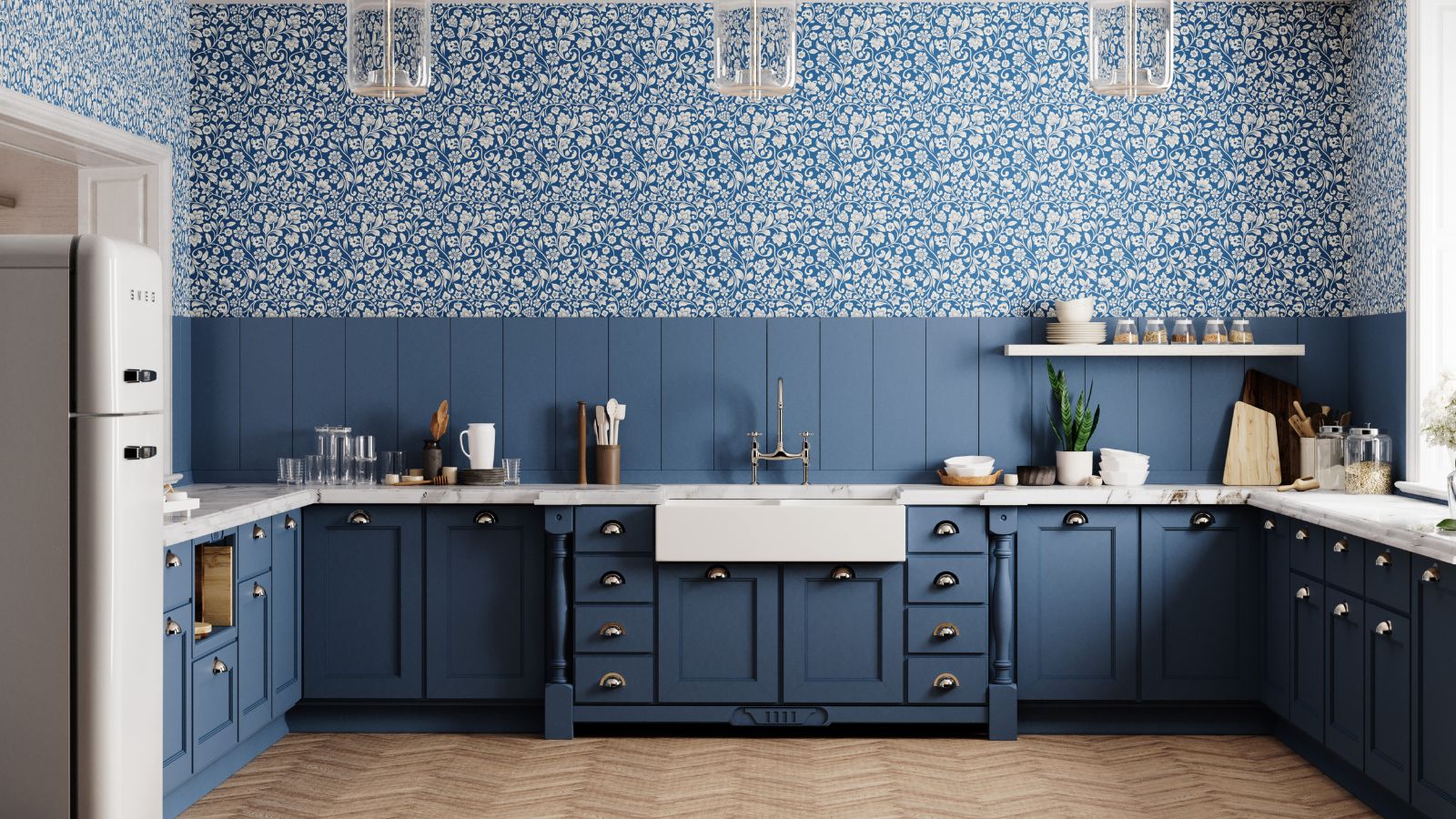 Do cleaning products expire? Professional cleaners warn time could make them ‘less effective, and in some cases, irritating to use’
Do cleaning products expire? Professional cleaners warn time could make them ‘less effective, and in some cases, irritating to use’For the best results, it pays to stay on top of the timeline of your cleaning products
By Chiana Dickson Published
-
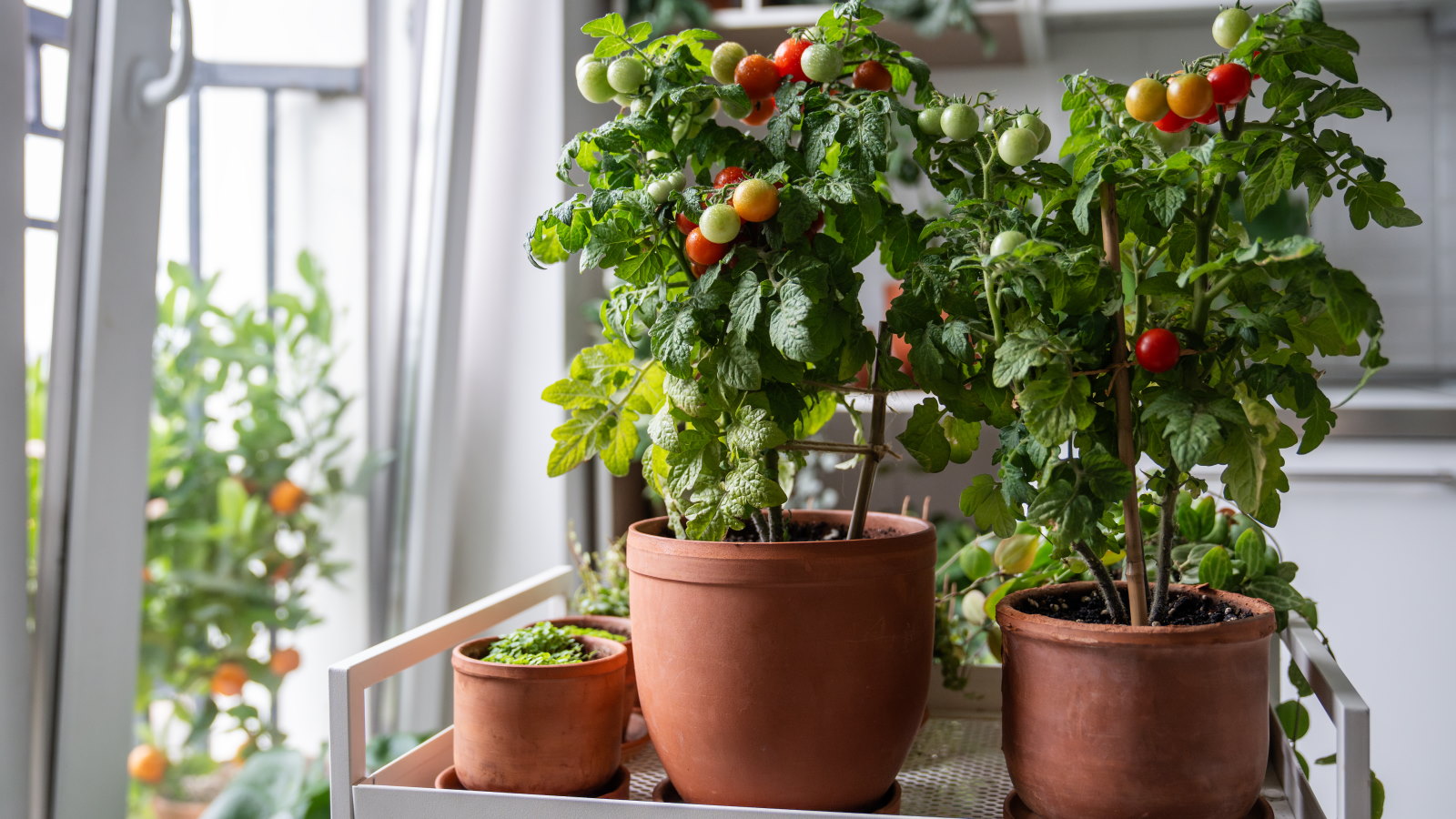 7 of the best tomatoes for growing in pots - expert growers pick their top varieties ideal for large harvests from containers
7 of the best tomatoes for growing in pots - expert growers pick their top varieties ideal for large harvests from containersYou can enjoy bumper homegrown harvests in small spaces
By Drew Swainston Published